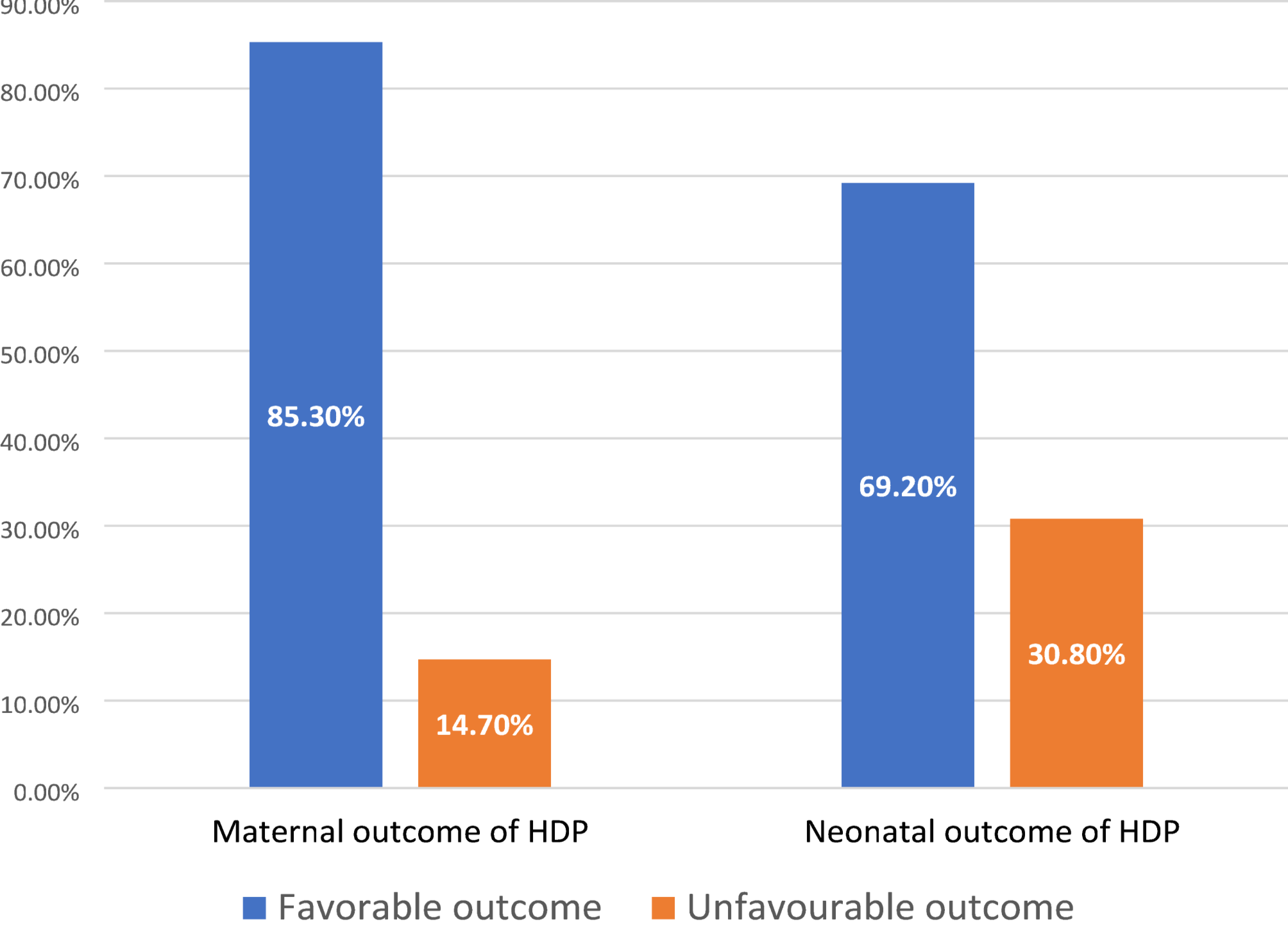Our current study has provided insights into admitted cases of hypertensive disorders of pregnancy in Sierra Leone, revealing a substantial burden of preeclampsia, with the vast majority of admissions occurring in the third trimester at an average gestational age of 35.64 weeks (± 4.31). While maternal outcomes were largely favourable, neonatal outcomes were significantly less, underscoring a crucial area for intervention. Importantly, gestational age at admission, prolonged hospitalisation (≥ 7 days), and elevated diastolic blood pressure were identified as key factors significantly associated with adverse neonatal outcomes, while gestational age and prolonged hospitalisation also significantly impacted maternal outcomes.
The high number of hypertensive disorders among young and nulliparous women in our study suggests a shifting epidemiological profile where hypertensive pregnancy is no longer limited to older or high-parity women. The increasing prevalence of hypertension among younger and reproductively active individuals may be influenced by behavioural lifestyle choices, urbanisation, and environmental stressors [17, 18]. This complements our findings, as most patients in the study were urban-based traders with prolonged stationary work patterns.
Preeclampsia and eclampsia emerged as the most common hypertensive disorders, similar to the observations made from studies conducted in Nnewi, Nigeria and in Northern India [19, 20]. However, this rate of admitted cases of preeclampsia and eclampsia in our study is quite alarming as it is considerably higher than reports from previous studies done in Nigeria, Ghana, Ethiopia, Pakistan, and the United States [21,22,23,24]. The majority of cases were admitted during the third trimester, consistent with the typical onset of hypertensive disorders of pregnancy, which commonly manifest at this stage due to peak cardiovascular and placental demands, increased plasma volume, and elevated vascular resistance [25, 26]. The predominance of late-term admissions raises concerns about the effectiveness of antenatal screening programs in Sierra Leone, suggesting a need for earlier and more rigorous monitoring to mitigate disease progression.
The study revealed a high rate of antihypertensive use, primarily combination therapy, reflecting adherence to the Sierra Leone Standard Treatment Guidelines (2021), which recommend the use of two agents from different classes for managing severe hypertension in pregnancy. Where monotherapy is indicated, methyldopa or nifedipine retard is preferred. A similar study in Sierra Leone reported the exclusive use of methyldopa, demonstrating compliance with national protocols and possibly contributing to the favourable maternal outcomes observed [27]. Furthermore, the administration of magnesium sulfate to 87.1% of patients reflects adherence to practice protocols aimed at preventing eclamptic seizures, which is a significant concern in managing HDP. However, the reliance on pharmacological interventions indicates the need for a stronger emphasis on preventive public health measures, including lifestyle modifications, nutritional interventions, and early risk factor assessment that complement clinical management and improve maternal outcomes [28, 29].
Maternal and neonatal outcomes were generally favourable, with 85.3% and 69.2% positive outcomes, respectively. However, the disparity between maternal and neonatal outcomes suggests that while medical interventions often succeed in stabilising mothers, fetal or neonatal well-being may remain compromised. This underscores the need for improved neonatal care, including enhanced access to neonatal intensive care units, better fetal monitoring during pregnancy, and implementation of strategies to reduce the risk of adverse birth outcomes [26]. Although the rate of unfavourable neonatal outcomes in our study was lower than that reported in northwest Ethiopia (46.5%) [16], it remains concerning and below the targets set by Sustainable Development Goal 3. Progress toward reducing maternal mortality to fewer than 70 per 100,000 live births by 2030 has been slow, particularly in low-resource settings like Sierra Leone, where systemic gaps persist [2, 30].
Gestational age on admission and duration of admission were found to be a common factor significantly associated with both maternal and neonatal outcomes in our current study, underscoring the importance of early detection and prompt management of hypertensive disorders in pregnancy before their progression. Another significant factor was prolonged patients’ admission > 7 days, which is a reflection of more severe cases or complications, necessitating extended care and monitoring duration. Diastolic blood pressure on admission was only found to be significantly associated with neonatal outcomes in our study. It is worth noting that early detection of elevated diastolic blood pressure can prompt timely interventions and closer fetal monitoring, which can mitigate risks to the newborn [31]. Healthcare providers should prioritise the assessment of diastolic blood pressure as part of routine prenatal care for women with hypertensive disorders to ensure better neonatal outcomes.
Interestingly, neither antihypertensive therapy nor magnesium sulfate administration showed a statistically significant direct association with outcomes, suggesting that pharmacologic management alone may not be sufficient to ensure optimal results. This implies a need for comprehensive care approaches, including early risk stratification, community-based screening, patient education, and strengthened health system referral pathways. Predictive algorithms incorporating maternal history and biomarkers, as suggested by O’Gorman Neil et al. [32], could further enhance early detection and treatment care plans.
Limitations
While retrospective studies can provide valuable insights, they are subject to some biases such as selection bias and recall bias, which may affect the quality of the data collected. Moreover, the study’s findings are specific to only admitted cases at the Princess Christian Maternity Hospital in Freetown, Sierra Leone, which may limit the generalizability of the results to other settings or populations. Also, due to the cross-sectional study design, causality cannot be inferred.
